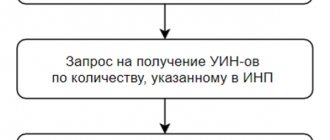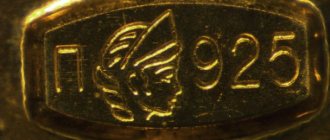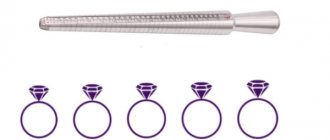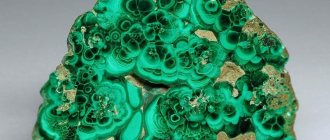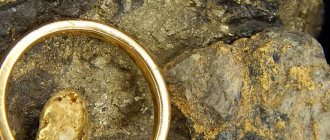Anyone who has purchased products made of precious metals at least once is familiar with the concept of “fineness”. These are several numbers that are written in the “passport” of the product and are available on it itself in the form of an imprint.
But the samples are not the same. For example, gold can be marked with numbers such as 958, 750 and, of course, 585. The last standard is the most popular, since the prices for products with it are an order of magnitude lower than with others. But what do these numbers mean? After all, the metal on which they are applied seems to be the same.
Precious metals
To provide information about the balances of precious metals, it is necessary to register a batch of DM from the section “Batches” - “Precious Metals” indicating the attribute “Enter balances” (see Figure 208 page 153 of the USER GUIDE OF THE ORGANIZATION-PARTICIPANT OF GIIS DMDK dated 12/23/2021).
1. The “Index” field is required ; the serial number of the accounting object is indicated in the form for entering information about the balances of precious metals.
2. The field “Name of batch” is required ; the short name of the accounting object is indicated, which unambiguously characterizes the product described in the accounting object.
3. In the “Batch Description” field, you can specify an additional text description of the accounting object if necessary.
4. The “Batch Type” field is required , the value “Precious Metals” must be indicated.
5. The “Type of batch” field is required ; it is recommended to indicate the most appropriate value from the following list of values: “Mineral raw materials”, “Recycled raw materials”, “Standard ingots”, “Measured ingots”, “DM products (granules, strips) , powders, etc.)", "Intermediate product of metallurgical production", "Scrap, waste".
6. The field “Processing stage” is required ; it is recommended to indicate the value corresponding to the process for which the registered balances of precious metals are intended, from the following list of values: “Production of metal products”, “Processing”, “Manufacture of products”, “Purchase”, “Restoration”, “Turnover on the territory of the Russian Federation”, “Import into the territory of the Russian Federation”.
7. The “Stage” field is required , the value “In storage” is indicated.
8. The “Status” field is required , the value “Initial input” is indicated. This field is required to be filled out by January 15, 2022.
9. The field “OKPD2 code” is required ; the classification of the accounting object is indicated in accordance with “OK 034-2014 (KPES 2008). All-Russian classifier of products by type of economic activity”, approved by order of Rosstandart dated January 31, 2014 No. 14-st) (hereinafter referred to as OKPD2). If there is no suitable OKPD2 code, but there is a more general value suitable for categorizing an accounting object, you should select the appropriate OKPD2 code.
10. The “Manufacturer” field is required ; details of the participant who is the manufacturer of the accounting item or details of the participant from whom the import accounting item was received are indicated. If specifying the organization’s details is impossible due to the selected stage of processing or type of accounting object, the value “Not installed due to lack of information before the implementation of GIIS DMDK” is indicated.
11. The “Owner” field is required to be filled in ; the details of the participant who is the owner of the accounting object are indicated: if the product belongs to you by right of ownership, indicate your organization; if the product is on commission, indicate your principal. If specifying the organization’s details is impossible due to the selected stage of processing or type of accounting object, the value “Not installed due to lack of information before the implementation of GIIS DMDK” is indicated.
12. The “Owner” field is required ; the details of the participant who physically has the accounting object are indicated, that is, the participant who enters information about the balances of precious metals in the GIIS DMDK.
In the GIIS DMDK system, the field will be automatically filled in with the details of the organization under the account (electronic key) you logged into the system.
13. The “Quantity” field is conditionally mandatory ; the number of units of products that make up the accounting object is indicated. Optional if the accounting objects cannot be specified individually.
14. The field “Unit of measurement” is required ; the physical unit used to measure the mass of the accounting object is indicated in accordance with the international designation code “OK 015-94 (MK 002-97). All-Russian Classifier of Units of Measurement”, approved by Decree of the State Standard of Russia dated December 26, 1994 No. 366 (hereinafter referred to as OKEI).
15. The “Ligature mass” field is required ; the ligature mass of the accounting object is indicated. If the object of accounting is a solution, the volume must be converted into mass by the participant who enters the information into the GIIS DMDK.
16. The “Nugget code” field indicates the code of the precious metal nugget in accordance with the organization standard STO 45866412-12-2014 “Nuggets of precious metals. Classification. Control methods, labeling, packaging and storage.” This field is required for nuggets before September 1, 2022.
17. The “Precious metal grade” field indicates the metal grade in accordance with GOST 28058-2015, GOST 28595-90, GOST 12341-81, GOST 12340-81, GOST 30649-99 (jewelry alloys), Enterprise Standards, Enterprise Specifications. This field is required to be filled out for standard and measured ingots, jewelry alloys before September 1, 2022.
18. The “Year of issue” field indicates the year of manufacture of the standard or measured ingot. This field is required for standard and measured ingots until September 1, 2022.
19. The “Ingot number” field indicates the number printed on a standard or measured ingot. This field is required for standard and measured ingots until September 1, 2022.
20. The “Sample” field is required ; the quantitative content of the main precious metal in the alloy is indicated. The value is indicated in thousandths.
21. The “Type of precious metal” field is required ; a classification attribute reflecting the type of precious metal (gold, silver, platinum, palladium, iridium, rhodium, osmium, ruthenium) is indicated. This field can contain several values depending on the amount of precious metals in the accounting object.
22. The “Chemical mass” field is required ; the chemically pure mass of the precious metal is indicated.
What about the numbers 958?
As for hallmark 958, it is quite difficult to find jewelry with it, since many things are simply not made from this alloy. For example, you can buy a chain, but the lock will be made of an alloy with a different grade, but earrings or rings or bracelets are not made from such an alloy.
However, almost every jewelry store has jewelry that has inserts made of alloy 958. Sometimes sellers display this digital code on a plate in the window. You need to be very careful and be sure to look at the “passport” of the product before purchasing it. As a rule, the entire item is made of 585 alloy, and only a minor element corresponds to 958.
Found a violation? Report content
Gems
Providing information about the remains of unprocessed precious stones that have undergone sorting, primary classification and evaluation and are at the disposal of the organization as of 01/01/2022 is carried out by registering the objects “Supply”, “Inventory” and “Batch DK” in the GIIS DMDK with the indication of the attribute “Input of balances” "
It is allowed to indicate one batch of DC in the inventory with a mass equal to the total mass of the inventory (without dividing into batches with different classification characteristics).
To provide information about the balances of precious stones that are at other stages of processing, it is necessary to register a batch of DC from the section “Batches” - “Gemstones” indicating the attribute “Entering balances” (see Figure 209 p. 154 of the USER MANUAL).
1. In the “Index” field, the serial number of the accounting object is indicated in the form for entering information about the remains of precious stones. This field is required.
2. In the “Batch Name” field, indicate the short name of the accounting object, which unambiguously characterizes the product described in the accounting object. This field is required.
3. In the “Batch Description” field, you can specify an additional text description of the accounting object if necessary. This field is optional.
4. In the “Batch Type” field, indicate the value “Gemstones”. This field is required.
5. In the “Batch Type” field, it is recommended to indicate the most appropriate value from the following list of values: “Rough gemstones”, “Processed gemstones”, “Diamond powders”.
6. In the “Processing stage” field, it is recommended to indicate the value corresponding to the process for which the registered remains of precious stones are intended, from the following list of values: “Sorting of CD”, “Processing of CD”, “Turnover in the territory of the Russian Federation”, “Import into the territory of the Russian Federation” " This field is required.
7. In the “Stage” field the value “In storage” is indicated. This field is required.
8. In the “Status” field, indicate the value “Initial input”. This field is required.
9. In the “OKPD2 Code” field, the classification of the accounting object is indicated in accordance with “OK 034-2014 (CPES 2008). All-Russian classifier of products by type of economic activity”, approved by order of Rosstandart dated January 31, 2014 No. 14-st) (hereinafter referred to as OKPD2). If there is no suitable OKPD2 code, but there is a more general value suitable for categorizing an accounting object, you should select the appropriate OKPD2 code. This field is required.
10. In the “Manufacturer” field, indicate the details of the participant who is the manufacturer of the accounting item or the details of the participant from whom the import accounting item was received. This field is required . If specifying the participant’s details is impossible due to the selected stage of processing or type of accounting object, the value “Not installed due to lack of information before the implementation of GIIS DMDK” is indicated.
11. In the “Owner” field, indicate the details of the participant who is the owner of the accounting object: if the product belongs to you by right of ownership, indicate your organization; if the product is on commission, indicate your principal. This field is required. If specifying the participant’s details is impossible due to the selected stage of processing or type of accounting object, the value “Not installed due to lack of information before the implementation of GIIS DMDK” is indicated.
12. In the “Owner” field, the details of the participant who physically has the accounting object are indicated, that is, the participant who enters information about balances into the GIIS DMDK. This field is required.
13. The “Quantity” field indicates the number of product units that make up the accounting object. This field is conditionally required. Optional if accounting objects cannot be specified individually.
14. In the “Unit of Measurement” field, the physical unit used to measure the mass of the accounting object is indicated in accordance with the international designation code “OK 015-94 (MK 002-97). All-Russian Classifier of Units of Measurement”, approved by Decree of the State Standard of Russia dated December 26, 1994 No. 366 (hereinafter referred to as OKEI). This field is required.
15. In the “Weight” field, the total weight of the accounting object is indicated. This field is required.
16. In the “Type of precious stone” field, the type of precious stones that make up the accounting object is determined. This field is required.
17. The fields “Shape”, “Size and weight group”, “Size”, “Color group”, “Color”, “Quality group”, “Cut group” determine the classification code containing information about the characteristics of the gemstone. The mandatory completion of each of these fields depends on the type of precious stones that make up the object of accounting. For each accounting object, the classification code of the precious stone is required to be filled out.
18. In the “Box Name” field, the name of the box (lot) or the number of the picking sheet, which includes the accounting object, is determined. This field is optional.
19. In the “Stone Number” field, the individual number of the diamond that makes up the accounting object is determined. This field is required for diamonds weighing 10.80 carats or more with an individual number.
20. In the fields “Inventory number”, “Inventory date”, the details of the inventory are determined based on the results of sorting, primary classification and assessment, which included the accounting object. These fields are required for untreated gemstones .
21. In the fields “Delivery number”, “Delivery date” the delivery details for sorting, primary classification and assessment, which included the accounting object, are determined. These fields are required for untreated gemstones.
22. In the fields “Document number on sorting”, “Date of document on sorting”, the details of the document confirming the completion of work on sorting, primary classification and assessment of the accounting object are determined. These fields are required for untreated gemstones.
23. In the fields “Number of the state control act”, “Date of the state control act” the details of the state control act of the results of sorting, primary classification and assessment of the accounting object are determined. These fields are required for untreated gemstones .
Semi-finished products
To provide information about the balances of semi-finished products made from DMDK, it is necessary to register a batch of semi-finished products from the section “Batch” - “Semi-finished products” indicating the attribute “Enter balances” (see Figure 210 p. 154 of the USER MANUAL).
1. In the “Index” field, the serial number of the accounting object is indicated in the form for entering information about the balances of semi-finished products. This field is required
2. In the “Batch Name” field, indicate the short name of the accounting object, which unambiguously characterizes the product described in the accounting object. This field is required
3. In the “Batch Description” field, you can specify an additional text description of the accounting object if necessary. This field is optional.
4. In the “Batch Type” field the value “Batch of products made of precious metals and precious stones” is indicated. This field is required
5. In the “Batch type” field, indicate the value: “Semi-finished products”. This field is required
6. In the “Processing stage” field, it is recommended to indicate the value corresponding to the process for which the registered remains of semi-finished products are intended, from the following list of values: “Manufacture of products”, “Turnover in the territory of the Russian Federation”, “Import into the territory of the Russian Federation”. This field is required to be filled in 7. In the “Stage” field the value “In storage” is indicated. This field is required
8. In the “Status” field, indicate the value “Initial input”. This field is required
9. In the “OKPD2 Code” field, the classification of the accounting object is indicated in accordance with “OK 034-2014 (CPES 2008). All-Russian classifier of products by type of economic activity”, approved by order of Rosstandart dated January 31, 2014 No. 14-st (OKPD2). If there is no exact suitable OKPD2 code, but there is a more general value suitable for categorizing an accounting object, you should select the appropriate OKPD2 code. This field is required.
10. In the “Manufacturer” field, indicate the details of the participant who registered the accounting object in the system or the details of the participant from whom the import accounting object was received. This field is required. If specifying the participant’s details is impossible due to the selected stage of processing or type of accounting object, the value “Not installed due to lack of information before the implementation of GIIS DMDK” is indicated.
11. In the “Owner” field, the details of the participant who is the owner of the accounting object are indicated. If the product is yours, indicate your organization; if the product is on commission, indicate your consignor. This field is required. If specifying the participant’s details is impossible due to the selected stage of processing or type of accounting object, the value “Not installed due to lack of information before the implementation of GIIS DMDK” is indicated.
12. In the “Owner” field, the details of the participant who physically has the accounting object are indicated, that is, the participant who enters information about balances into the GIIS DMDK. This field is required
13. The “Quantity” field indicates the number of product units that make up the accounting object. This field is required
14. In the “Unit of Measurement” field, the physical unit used to measure the mass of the accounting object is indicated in accordance with the international designation code OKEI. This field is required
15. In the “Weight” field, the total weight of the accounting object is indicated. This field is required
16. In the “Declared Sample” field, the declared quantitative content of the main precious metal in the accounting object is indicated. The value is indicated in thousandths. This field is required
17. In the “Confirmed Sample” field, the confirmed quantitative content of the main precious metal in the semi-finished product in thousandths is indicated. This field is required to be filled out only for those semi-finished products that have been tested, analyzed and hallmarked by the territorial body of the Federal Assay Office.
18. In the “Alloy grade” field, indicate the name of the alloy grade in accordance with GOST 30649-99. This field is optional.
19. In the “Type of precious metal” field of the “Information about precious metals included in the alloy” field, the name of each precious metal present in the accounting object is indicated. This field is required
20. In the “Main precious metal” field of the “Information on precious metals included in the alloy” field, the attribute of the main precious metal contained in the accounting object is noted. This field is required
21. In the “Chemical mass” field of the “Information about precious metals included in the alloy” field, the chemically pure mass of the accounting object is indicated. This field is required to be completed by April 1, 2022.
— For semi-finished jewelry and other products made of gold, platinum and palladium with inserts of precious stones, the chemically pure mass of the precious metal is calculated using the calculation method.
— For semi-finished jewelry and other products made of gold, platinum and palladium with inserts made of base stones, the chemically pure mass of the precious metal is calculated analytically, including by subtracting the mass of the insert.
— For semi-finished jewelry and other silver products with inserts of base stones, the total weight of the product is indicated.
22. In the “Quantity” field of the “Information about inserts of precious stones” field, the number of precious stones present in the accounting object is indicated. This field is required for semi-finished jewelry with precious stone inserts.
23. In the “Description of insert” field of the “Information about inserts from precious stones” field, information about the precious stones in the insert from the accompanying documents (label/tag) is indicated. This field is required for semi-finished products with precious stone inserts.
24. In the field “Information about inserts made of base stones, description of the insert” the number of units of products that make up the accounting object is indicated, as well as information about base stones in the insert from the accompanying documents (label/tag). This field is required for semi-finished products with inserts of base stones. Fields 22, 23 and 24 can be combined and filled in simultaneously in a text field.
What does the digital code on the product mean?
In fact, there are no pure gold items in jewelry store windows. Everything that glitters beautifully under glass and is quite expensive is made from alloys.
Fineness means how large the “gold component” is in the product. In other words, the jewelry with the digital code 585 contains almost 59% pure gold, and the rest is completely different metals.
Entering jewelry balances
Entering jewelry balances can be done in two ways:
1 - Registration of semi-finished products with subsequent identification of batches of jewelry;
2 — Piece registration of jewelry.
To register semi-finished products you must:
1) Go to the “Batch” “Semi-finished Products” section and click the “Create” “New Batch” button (see Figure 211 p.155 of the USER MANUAL);
2) Check the “Enter balances” checkbox and fill in the fields on the “General details” tab, indicating the batch type “Semi-finished products” (see Figure 212 p. 155 of the USER MANUAL);
In the “OKPD2 code” field, select the code corresponding to the products.
The EAEU FEA TP field is filled in only by importers and exporters.
We indicate the quantity, weight, and sample of jewelry in the batch.
3) Specify information about the alloy on the “Batch Details” tab (see Figure 213 page 156 of the USER MANUAL);
4) Provide information about precious stone inserts. Gemstone inlays are described by weight, total number of gemstones in the jewelry and, if the participant has such information, their type.
If there is no information about the type of stones, the generalized entry “Gemstone” is indicated (see Figure 214 p. 156 of the USER MANUAL).
5) Click the “Save” button. In this case, the “Registration” button will be displayed (see Figure 215 page 157 of the USER MANUAL).
6) Click the “Registration” button. The party will be assigned an INP. The system will reserve a pool of UIN based on the number of semi-finished products specified in the batch
Next, it is necessary to identify batches of jewelry:
1) Go to the context menu item “Make UI” (see Figure 216 page 157 of the USER MANUAL);
2) Fill in the general details of the YI party and click the “Save” button (see Figure 217 p.158 of the USER MANUAL).
A new batch of UI will be registered with the attribute “Input of balances”, and a batch of semi-finished products will be indicated as the parent batch. When filling out information about the batch:
1. In the “Index” field, the serial number of the accounting object is indicated in the form for entering information about the balances of jewelry. This field is required
2. In the “Batch Name” field, indicate the short name of the accounting object, which unambiguously characterizes the product described in the accounting object. This field is required
3. In the “Batch Description” field, you can specify an additional text description of the accounting object if necessary. This field is optional.
4. In the “Batch Type” field the value “Product made of precious metals and precious stones” is indicated. This field is required
5. In the “Batch type” field, indicate the value “Jewelry”. This field is required
6. In the “Processing stage” field, it is recommended to indicate the value corresponding to the process for which the registered product remains are intended, from the following list of values: “Manufacture of products”, “Turnover in the territory of the Russian Federation”, “Import into the territory of the Russian Federation”. This field is required
7. In the “Stage” field the value “In storage” is indicated. This field is required
8. In the “Status” field, indicate the value “Initial input”. This field is required
9. In the “OKPD2 Code” field, the classification of the accounting object is indicated in accordance with “OK 034-2014 (CPES 2008). All-Russian classifier of products by type of economic activity”, approved by order of Rosstandart dated January 31, 2014 No. 14-st (OKPD2). If there is no exact suitable OKPD2 code, but there is a more general value suitable for categorizing an accounting object, you should select the appropriate OKPD2 code. This field is required
10. In the “Manufacturer” field, indicate the details of the participant who registered the accounting object in the system or the details of the participant from whom the import accounting object was received. This field is required. If specifying the participant’s details is impossible due to the selected stage of processing or type of accounting object, the value “Not installed due to lack of information before the implementation of GIIS DMDK” is indicated.
11. In the “Owner” field, the details of the participant who is the owner of the accounting object are indicated. If the product is yours, indicate your organization; if the product is on commission, indicate your consignor. This field is required. If specifying the participant’s details is impossible due to the selected stage of processing or type of accounting object, the value “Not installed due to lack of information before the implementation of GIIS DMDK” is indicated.
12. In the “Owner” field, the details of the participant who physically has the accounting object are indicated, that is, the participant who enters information about balances into the GIIS DMDK. This field is required
13. The “Quantity” field indicates the number of product units that make up the accounting object. This field is required. When receiving a UIN for paired products declared as residuals, one UIN is requested. When entering information about new products from March 1, 2022, you will need to request two UINs.
14. In the “Unit of Measurement” field, the physical unit used to measure the mass of the accounting object is indicated in accordance with the international designation code OKEI. This field is required
15. In the “Weight” field, the total weight of the accounting object is indicated. This field is required
16. In the “Article” field the designation of the product type in the manufacturer’s coding is indicated. This field is required
17. In the “Trademark (brand)” field, indicate the name of the trademark (brand). This field is optional.
18. In the “Product Image” field, graphic images of the product are indicated. This field is optional, images are submitted voluntarily.
19. In the “Sample” field, the quantitative content of the main precious metal in the jewelry item is indicated. The value is indicated in thousandths. This field is required
20. In the “Type of precious metal” field of the “Information about precious metals included in the alloy” field, the name of each precious metal present in the accounting object is indicated. This field is required
21. In the “Main precious metal” field of the “Information on precious metals included in the alloy” field, the attribute of the main precious metal contained in the accounting object is noted. This field is required
22. In the “Chemical mass” field of the “Information about precious metals included in the alloy” field, the chemically pure mass of the accounting object is indicated. This field is required to be completed by April 1, 2022.
— For jewelry and other products made of gold, platinum and palladium with inserts of precious stones, the chemically pure mass of the precious metal is calculated using the calculation method.
— For jewelry and other products made of gold, platinum and palladium with inserts made of base stones, the chemically pure mass of the precious metal is calculated analytically, including by subtracting the mass of the insert.
— For jewelry and other silver products with inserts made of base stones, the total weight of the product is indicated.
23. In the “Quantity” field of the “Information about inserts of precious stones” field, the number of precious stones present in the accounting object is indicated. This field is required for jewelry with precious stone inserts.
24. In the “Description of insert” field of the “Information about inserts from precious stones” field, information about the precious stones in the insert from the accompanying documents (label/tag) is indicated. This field is required for jewelry with precious stone inserts.
25. In the field “Information about inserts made of base stones, description of the insert” the number of units of products that make up the accounting object is indicated, as well as information about base stones in the insert from the accompanying documents (label/tag). This field is required for jewelry with inserts of base stones. Fields 23, 24 and 25 can be combined and filled in simultaneously in the text field.
What is added to gold?
Alloy compositions are very diverse, and this should be taken into account when purchasing. For example, people who are hypersensitive to copper and bronze are better off not purchasing earrings with 585 grade if their color is reddish or red. This shade indicates a high amount of allergenic metals in the alloy.
Colleagues keep their distance from you: disadvantages of being the boss's favorite in the office
Combined approach: why virtual recruiting is gaining momentum
No desire to advance: types of students who are at risk of becoming unemployed
A dull shade, lacking shine, indicates a high percentage of lead or antimony. Although according to the rules their quantity should not exceed 0.005%, this applies only to one type of metal, and not to their total quantity. That is, if you “disassemble” such a product into its component components, it turns out that it contains a little bit of everything.
According to the rules of GOST number 6835-80, lead, copper, silver, iron, bismuth and a number of other metals can be added to gold. Agree, it’s not pleasant to know that you have lead earrings in your ears.
A good, high-quality gold product with hallmark 585, as a rule, consists of the following components:
- gold – 48.5-49%;
- silver – 30%;
- copper - 34%.
It was from this alloy that jewelry with hallmark 585 was made in the Soviet Union.
But why is gold “diluted”? Is it really for reasons of economy?
Piece registration of jewelry
To register a piece of jewelry you must:
- Go to the “Batch” “Jewelry” section and click the “Create” “New Batch” button (see Figure 218, page 159 of the USER MANUAL);
- Set the “Enter balances” checkbox, fill in all the necessary details for the new batch indicating the DC inserts (if available) and click the “Save” button (see Figure 219 p. 159 of the USER MANUAL);
When filling out information about the batch, we use the recommendations for filling out the fields given above.
- Register the YI party using the “Registration” button. In this case, the batch will be assigned a UIN (see Figure 220 page 160 of the USER MANUAL).
Assigning UIN to the remainder
In order to assign UIN balances for a batch of jewelry and other products made of precious metals or semi-finished jewelry and other products made of precious metals and precious stones (hereinafter referred to as jewelry, semi-finished products) registered as balances, GIIS DMDK allocates UIN pools in accordance with the declared number of jewelry/semi-finished products (no more than five thousand pieces).
When receiving a UIN for paired products declared as residuals, one UIN is requested. When entering information about new products from March 1, 2022, you will need to request two UINs.
The participant can, using the integration service or through the personal account of the GIIS DMDK, receive information about UINs not used for identification of jewelry/semi-finished products from the declared batch of balances from the moment of registration of the batch of balances in the GIIS DMDK until September 1, 2022.
After receiving the UIN, the participant identifies the jewelry from the available balances (prints the UIN on a label, attaches a label to the jewelry).
The participant, no later than 90 calendar days from the date of receipt of the UIN received for the declared remains of jewelry, ensures their conversion into two-dimensional bar codes by applying them to tangible media.
UINs that are not converted within the specified period are canceled automatically.
After identifying jewelry from the remains, the participant can transfer information about the identified remains to the GIIS DMDK. When transmitting information about identified remains, the participant has the opportunity to correct the description of the precious stone inserts.
The transfer of information about identified balances is mandatory if the participant registers their implementation (sale) in the GIIS DMDK.
Identified balances sold (sold) without providing information to the GIIS DMDK are subject to re-identification by the participant who is the buyer.
The material was published in the New Year’s special issue of the magazines “Expo-Jeweler” and “Catalog of Jewelry New Products” (December 2022)
All publications on the portal on the topic of GIIS DMDK
Ask QUESTIONS and get ANSWERS on GIIS
Telegram channels and chats on GIIS DMDK:
- Channel “Bulletin of GIIS DMDK ” (1200 subscribers) https://t.me/giisdmdk
- Chat “ GIIS DMDK: Marking and special accounting ” (chat for 3800 participants) https://t.me/giis_dmdk
- Chat “ GIIS DMDK: Jewelry production - JewelerTech ” (700 participants) https://t.me/jewellertech
- Chat “ GIIS DMDK: Pawnshops and consignment stores ” (250 participants) https://t.me/lombardisty
- Chat “ Purchase and activities for processing (recycling) waste and scrap precious metals ” (650 participants) https://t.me/skupka_pererabotka_dm
- Chat “ GIIS DMDK: Retail jewelry trade ” (900 participants) https://t.me/jewelry_retail (temporarily on stop)
Groups, accounts, channels and chats for DMDK market specialists
What are alloys used for?
Gold by its structure is not durable. This is a very soft metal that wears out quickly, is easily deformed and breaks quickly. Who wants to pay a lot of money for earrings that will become unusable after a couple of appearances? If we talk about jewelry such as a necklace or tiara, then gold will not withstand the weight of precious stones at all; it will bend during the processing process in the workshop.
Show your authority: how to overcome insecurity when your wife is more successful
How to find a job in 2022? The horoscope will tell you
Read three books and other New Year's resolutions for career growth
Accordingly, the precious metal is “diluted” not for reasons of economy or to make products cheaper, but out of necessity. There is only one reason for using an alloy in jewelry production - to give the product strength and durability.
The most expensive are palladium alloys, they are also considered the most durable and least allergic. This is the so-called white gold. As a rule, products made from an alloy of gold and palladium are displayed in separate display cases and cost an order of magnitude higher than the usual jewelry of yellow-pinkish shades. Although the sample on the products is the same.
